Alena Rvacheva, a lead designer-architect of solutions at Metabot, shares her experience and impressions from working on one of her first projects.
The profession “Chatbot Architect” may seem unusual, confusing, or even not particularly elite to many people today. There are so many platforms for creating auto-responses at any time of day or night, what’s so surprising about that?
Perhaps nothing is surprising, especially for specialists related to technical fields of activity. But for many, the profession holds a lot of interest. Firstly, you can obtain primary knowledge of an acceptable level independently if you really dedicate your time and desire to it. Secondly, it is one of the opportunities to help people in the field of communication with the aim of optimizing the receipt and processing of information. And thirdly, it expands personal horizons and allows you to acquire many useful contacts from completely different fields.
Why from completely different fields? Because chatbots and any other conversational interface can be implemented in absolutely any field, and moreover, they are in acute need right now. Modern people don’t like to wait. They need an answer right here and now, and it should be as comprehensive and satisfactory as possible. Operators of communication departments in companies are mostly forced to conduct several dialogs at the same time. But people are not robots, they cannot keep all the information in their heads and do not think about the answer, but immediately give it. People cannot, but chatbots can! They are created for this – to instantly search for what is required from them.
So it turns out that chatbots do not take away anyone’s job and do not reduce staff, as is stereotypically believed. They help people improve the quality of work, freeing them from many formal clarifications and providing an already prepared and almost processed customer request.
Now, the faster companies or government institutions understand the need to introduce new digital functionality into their business processes, the faster they progress in the market. The quality of services provided, whether it be sales, service, training – is growing, and this increases customer loyalty.
In the summer of 2020, after many companies started transferring their staff to remote work, and customers began to show more interest in receiving information online, the company “Acoustic Group” became interested in implementing a virtual assistant as a widget on their website to unload operators.
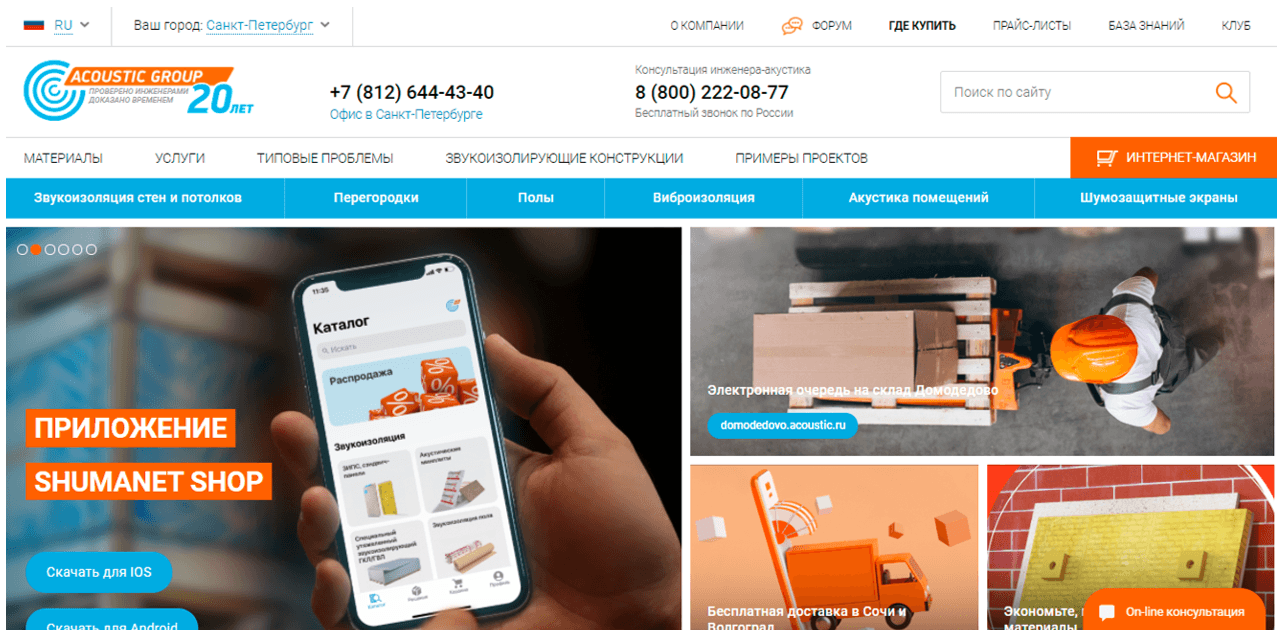
Customer’s website https://acoustic.ru
However, the company’s representatives did not understand what the structure of the chatbot should be, and for this, they turned to the specialists of the company “Metabot”, with whom I directly cooperate in implementing project work to create chatbots.
The process of creating a chatbot in most cases consists of several stages. The first is the analysis of the business and the already established communication channels. The second is discussing the concept and forecasting its effectiveness for further business development. The third is the actual creation of the chatbot and its implementation in all necessary communication channels. And the fourth is an analysis of the work done and subsequent improvements that have emerged during the chatbot’s operation.
In the case of the Acoustic Group company, the need for a chatbot was due to the need to unload operators regarding the collection of basic information, on the basis of which it is possible to immediately provide a sound insulation solution. To fulfill the set task and offer the best solution, an analysis of the dialogs for the last six months of the company’s work was carried out.
It’s very good that the customer already had a communication channel implemented, this significantly sped up the entire chatbot creation process at the initial stages.
After the analysis, it was decided that it is necessary to make a chatbot with audience segmentation:
– customers who want to order a consultation (knowing what they want or not);
– customers interested in details about the company’s products;
– customers asking basic questions, information about which is on the site, but perhaps poorly organized and causes difficulties.
Thus, in the future chatbot, several scenarios should intersect: a self-service menu, answers to frequently asked questions with a natural language recognition function, and processing requests for consultation.
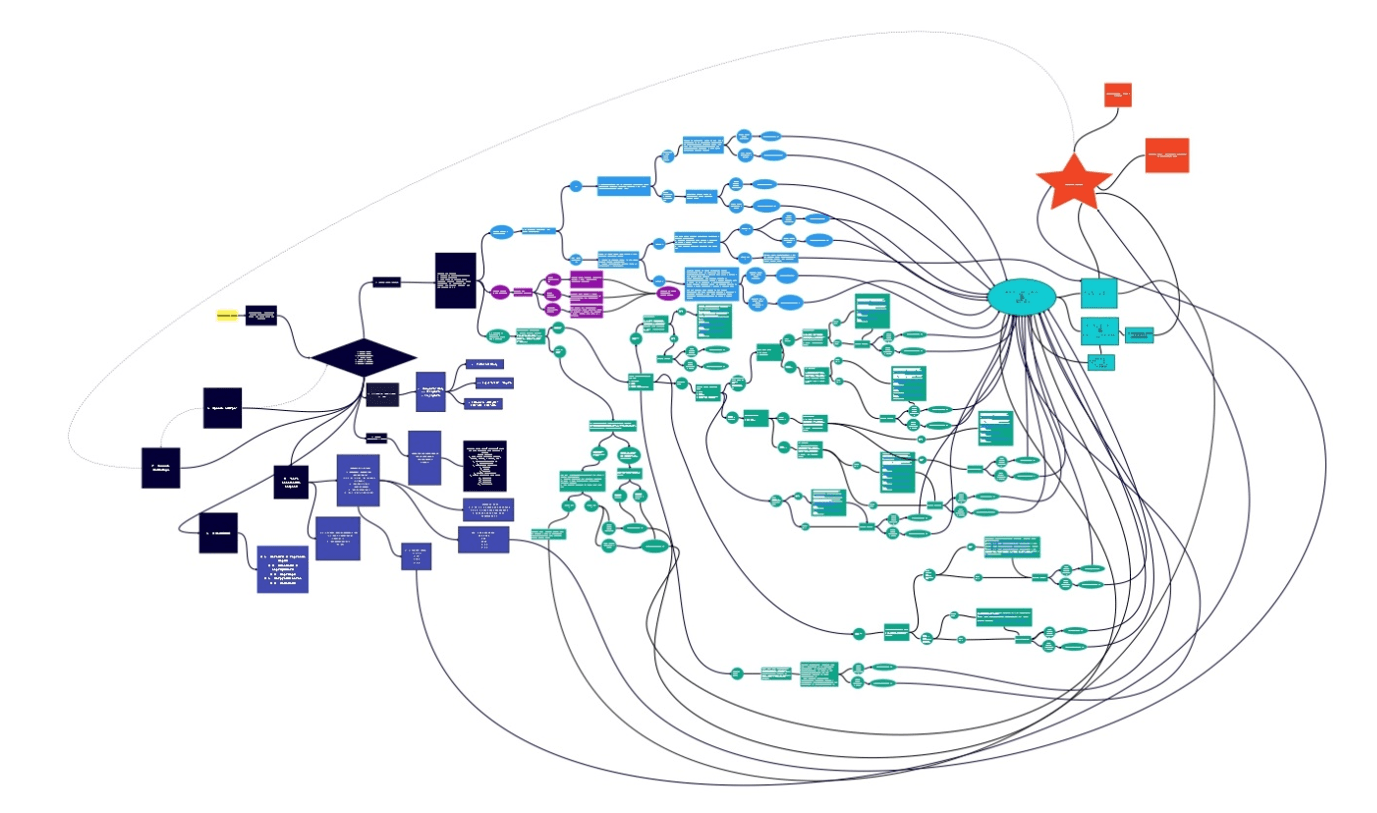
Project flowchart by Alyona Rvacheva
Due to the fact that the Acoustic Group employees did not want to change the operators’ workplace (they used “Livetex”), a chatbot creation platform with a wide choice of integrations was needed. At that moment, the Metabot platform did not have this capability, and therefore after confirming all the details of the future project, it was decided to make a test bot on a third-party tool, and at the same time to improve their own. Thus, teamwork was carried out on several digital products in order to eventually achieve the best result. However, after the completion of creating the test version of the chatbot, it was realized that compared to the third-party platform, Metabot has a more flexible functionality, a more understandable and comfortable workplace for architects (including the ability to work in a team on one project) and specialists who are more interested in the development of the platform, who strive to keep up with the times, implementing all new technological improvements in extremely tight deadlines and adapting them to the market.
Before the launch, the Acoustic Group’s project was completely transferred to the Metabot platform using NLP-recognition from the partner Dialogflow. At that time, Metabot specialists successfully integrated with Livetex and created a new contextual functionality for integration with Dialogflow. Also, an individual widget was customized to meet all color and size requirements, adapted for all browsers from both PCs and mobile devices.

Chat widget in the browser on a computer
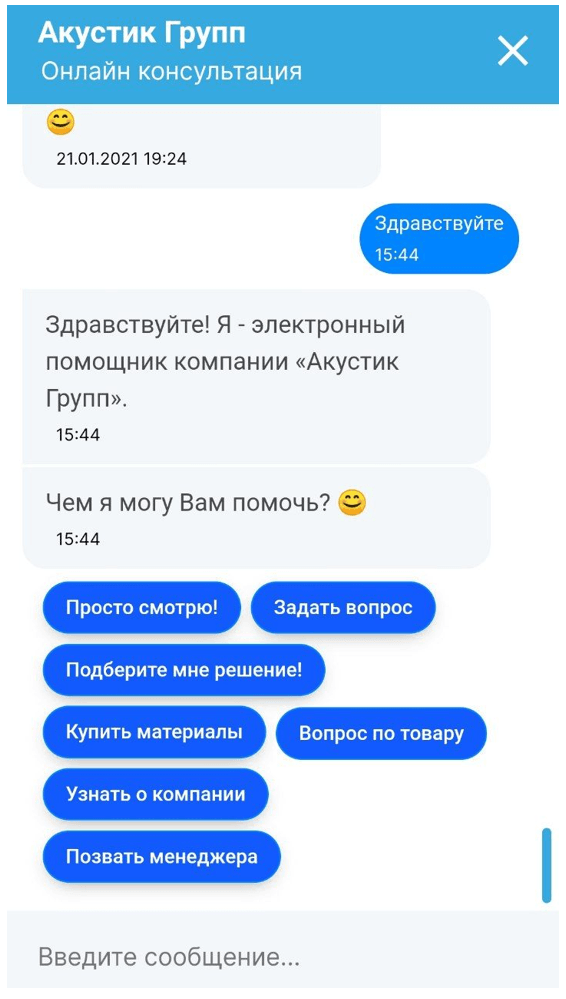
Chat widget in the browser on a mobile device
Results
After the launch of the chatbot, its operation was analyzed in the first month and changes were immediately made to improve clients’ communication with the virtual operator.
As a result, already in the second month of operation, the chatbot was able to successfully handle 60% of all incoming dialogs on its own.
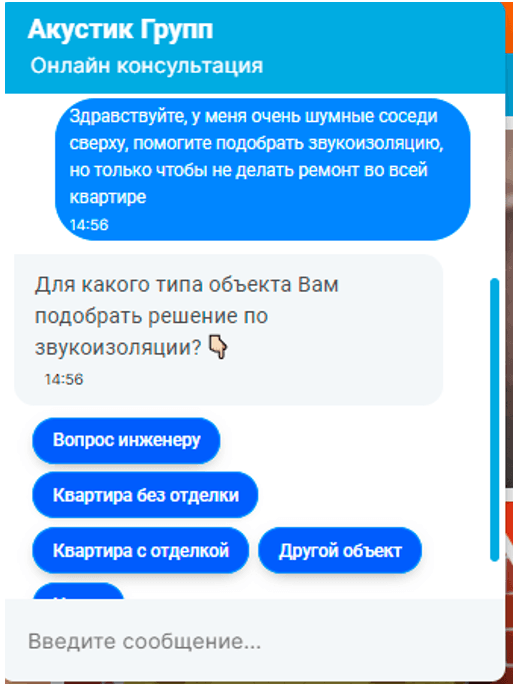
Help example: initiating the main funnel for placing an order
Two more months of gradual adjustments and adding missing scenarios later, already 85% could be considered successfully processed dialogs.
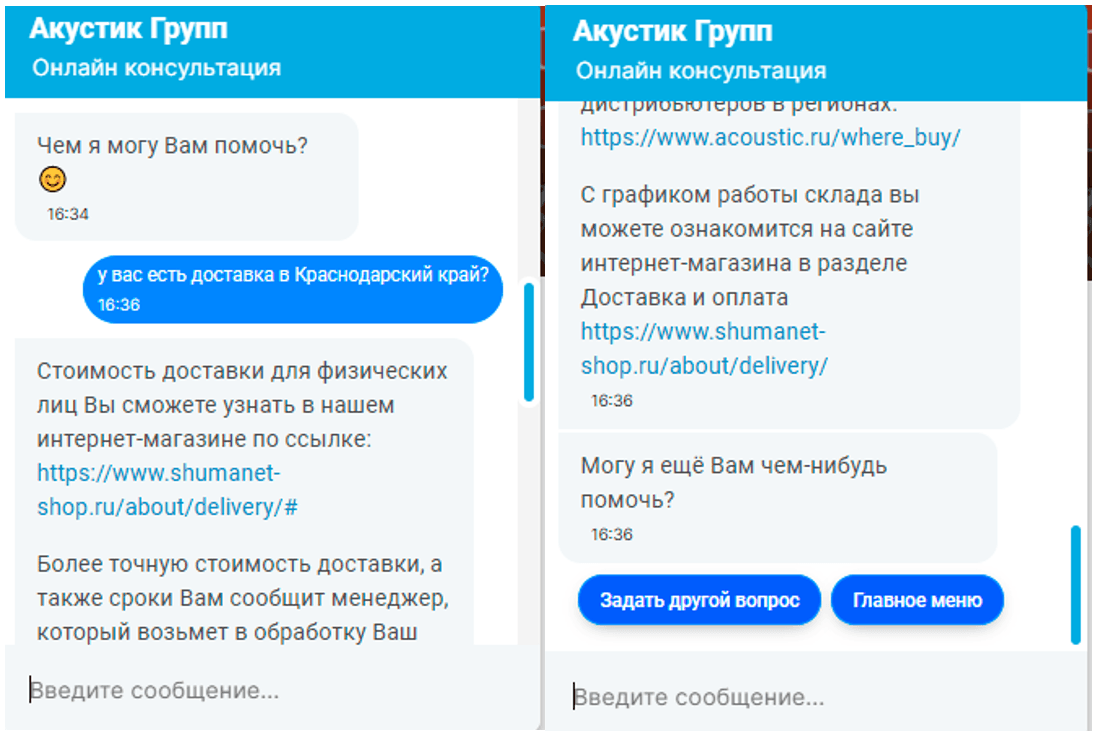
Help example: quick response from the FAQ knowledge base
As of today, the employees of the Acoustic Group company admit that the chatbot is working simply excellently, the task was fully completed, and now the quality of customer service has noticeably improved.
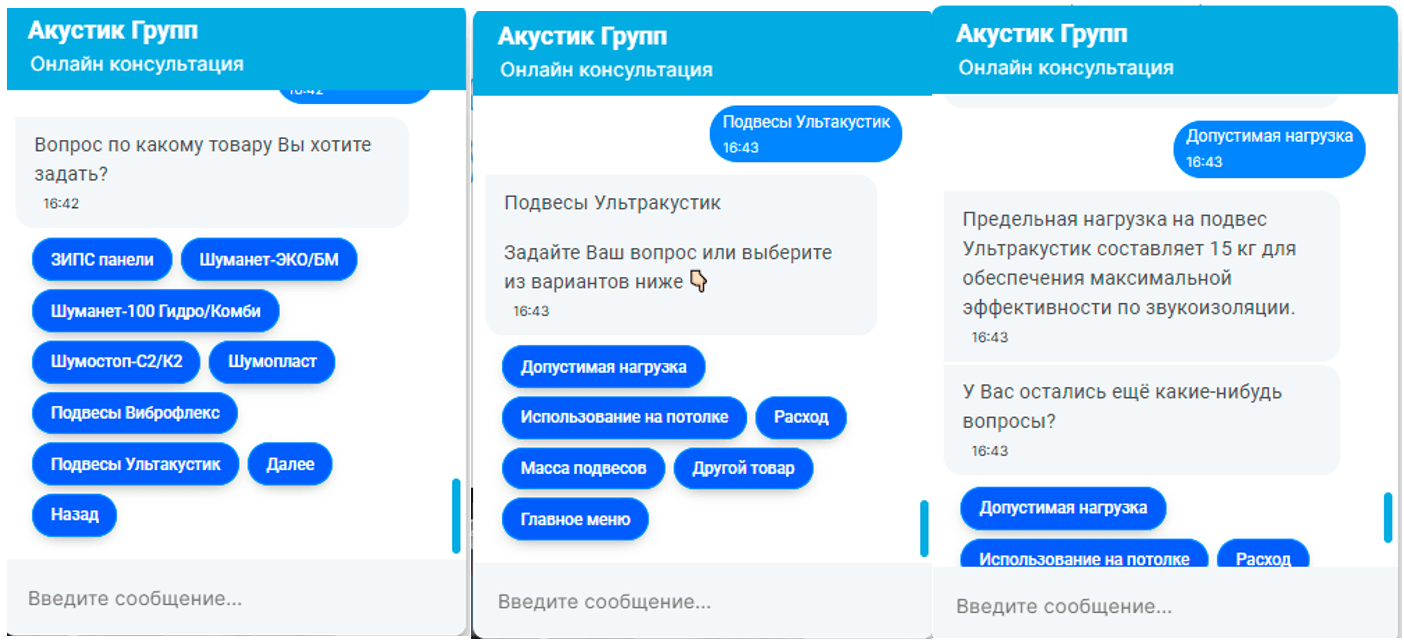
Help example: independent study of information about products in the chatbot’s menu sections
From my side, I can note that the development of this chatbot was an extremely interesting stage in my professional activity. I was able to gain new knowledge, by experience, was able to compare the working conditions on different competing products, and also learned a lot of new interesting information about soundproofing systems, which is more related to domestic knowledge acquisition. Thus, I can confidently state that creating chatbots expands the horizon and positively affects self-development, as well as brings a good income.